Arc of Time
I have only one note from Chaco Canyon1: the wind gusts, a light whistling sound through the thin curled leaves of creosote; in the interludes the stillness is filled with raven calls reverberating across the canyon, a conversation bouncing around sandstone, echoing in arroyos until, like everything else here, they fade into the darkness of the past.
There is only so much one can say for sure here. Try to cling to some idea and it will slip through your fingers as another contradictory one arises. That something happened here once upon a time at Chaco is really all I or anyone else can say about this place.
There are ruins to prove that something happened. Great stone structures that have stood for over a thousand years in many cases. Once there were people, now there are stones. And ravens.
Craig Childs, whose book House of Rain I highly recommend2, recounts the various theories on what happened here. In the end there are nearly as many theories as archaeologists.
The evidence gathered from a century of digging and mapping can support nearly any speculation thrown at Chaco Canyon: religious center, military center, government center, economic center, ceremonials center — the list is extensive. The place is thought by some to have been a colony of churches, its numerous great houses exhibiting certain recurring features thought to be religious. The repetition of specific architectural designs could also be interpreted as a form imposed by a ruling elites, the abundance of goods as tithing. The outrageously copious artifacts found inside these great houses look like ritual paraphernalia: feathers and bones representing nearly every bird species found with a thousand mile radius; a large number of wooden staffs like shepherds crooks, their handles inlaid with fines stones; and many rooms filled precious, expertly crafted mementos, may of which were found positioned as if on alters.
Other people take the abundance to mean that Chaco was a commercial center, a pre-Colombian shopping mall built to redistributes good in the Southwests notoriously unstable environment. In that sense the buildings are seen as store houses with some rooms tacked nearly to the ceiling.
Probably all these theories are wrong. The first things to do at Chaco is accept that you cannot know.
The question that most nagged me in Chaco seemed simpler, but perhaps was not — why here? What was that lured so many people here, inspired them to some of the finest construction in North America in this otherwise rather unremarkable wash, one of about a dozen that come off the San Juan river in it’s path down off the Colorado Plateau.
That’s the question I pondered on the trails, walking through the dusty flatlands, up the rough, rocky climbs to the mesa tops where the sun is hot and relentless.
Standing in thousand year old buildings tends to fill you with awe, it doesn’t matter if it’s Cambodia, Austria or New Mexico. As fragile, impermanent beings we’re drawn to permanence, we are inspired by by what we lack — sturdiness and longevity. Even today, when we could build with anything, we choose steel girders, concrete, and asphalt, imitations of stone. Because laying in and fitting stone like the builders of Chaco is labor intensive and time consuming, time we don’t seem to have. But they did.
The Chacoans had time. Not just for these buildings, but for even more labor intensive projects, like a network of roads running absolutely straight and true across the desert, possibly for thousands of miles. Raised stone road beds thirty to forty feet wide running for thousands of miles — even with modern technology that would likely take decades. How the Chocans did it remains a mystery, but the faint outlines of them can still be seen from space.
Similar head-scratching feats of design and building surround the builders of Angkor Wat, Machu Pichu, Teotihuacan and elsewhere. But there is something different about here, something extra about this place. You hear it in the murmur of the wind through creosote, you see it in the stone work of the greathouses. Something happened here, something happened in a way it never has again. Whatever these people saw, whatever they had access to, it was more than we do today. Their world was unutterably alien to ours and you feel it every second you are here.
You should come here. You should sit here and consider it. Don’t worry about the heat, it is everywhere. You will make peace with it. Or you will die in it, either way there is no need to worry about it. It will be here. You must come when it is here. You will not know the core of this place if you do not come in the heat.
Some archaeologists think these citadels may have been painted white. Gleaming white beacons rising out of the shimmering mirage of heat. It must have been something to arrive here having walked from Mexico, California, The Gulf Coast and all the other places for which there is evidence that people came.
We hiked in the mornings, climbing up the canyon walls, while there was still some shade to be had, and up on to the mesa where there was none. Or so it seems at first glance. But then you look closer, you start to think differently, you realize you could crawl up under that juniper tree and get a break from the sun, you see ledges in the rocks where you could wedge yourself flat against what might still be cool sandstone. There are escapes here, but you will have to work for them.
Chaco remains largely off the grid. The road in from the north is rough enough that it takes nearly an hour to drive 13 miles. And the first two miles are paved, so really it takes about 50 minutes to drive 11 miles. That’s part of the remoteness, but there is more. There’s something about this wash that once you are in it it consumes your past in some way, you are no longer just you, you are you in Chaco.
This is one of those places that can influence things. It seems to have a will about it, whether it’s the place or some echo of the people who were here I could not say, but if you come here you will feel it.
You might see some things you’re pretty sure aren’t there. They are there. Everything is here.
The first day we left early to stay out of the heat, we headed up the eastern wall of the main wash, no real destination in mind, simply following that ancient human need to get to high point and survey the land, wrap your head about where you are.
We stuck to the trail for a good while, then we deviated. Chaco is the most tightly controlled national parkish area I’ve ever been in. In my experience National Parks typically have a tightly controlled area, generally around whatever the feature of the park is — Yosemite valley, Sequoia trees, the grand canyon, etc — and then the backcountry is more or less unregulated, at least in terms of where you can go. Not enough people venture beyond the first mile of trail to bother regulating the backcountry too much.
Not true here.
It’s still true that no ventures beyond that first mile, but here the backcountry is regulated just like the rest. There’s not even overnight camping allowed in the backcountry. It’s a little bit like being a kid again (not in a good way), you have to be home by sunset and you’re not to detour from the trail. Ever.
We might have gotten lost you could say. There was a tiny wash, up near the end of it I spied an overhang that promised at least shade, perhaps more. I could not say, we did not make it. The kids are kids after all. They tuckered out in the heat and the soft sand of the wash, which was just wide enough to look trail-like, plausible deniability should we have run into a ranger. I can do a mean dumb tourist when I need to. But no ranger came for us, just the heat and the exhaustion it brings. We ate a snack, rested on some rocks. Every now and then a breeze would puff our sweaty clothes like air conditioning. It was wonderful. Then we gathered up our things and walked back.

The campground is tucked back in a tributary wash, up against a short sandstone bluff, wedge between the road and some 900-odd-year-old buildings tucked back under an overhang. About 30 feet up the wall to the right of the buildings are some petroglyphs, some ancient, some recent.
In another of Craig Child’s books, Finder’s Keepers, about the rather outrageous world of archaeology, artifacts and the people obsessed with them, Childs recounts a story he heard from a flamboyant and occasionally flagrantly law breaking Santa Fe antiquities dealer who invited over a bunch of archaeologists and local pueblo tribal leaders for a barbecue party. Half way through the party the host announced that food everyone was eating was grilled over a fire built with charcoal from a dig on private land — 1000 year old charcoal used to grill up some burgers in a backyard in Santa Fe. The archaeologists all went pale and started to toss their food in outrage. The tribal leaders just smiled and shook their heads.
What does that mean? I don’t know. I wonder though, was that charcoal made 1000 years ago perhaps as part of a backyard barbecue? Would that charcoal maker by mortified or satisfied to know that 1000 years later it finally seared some meat?
In America we experience the past mainly as a roped off thing, something carefully catalogued and carted off to museums where only a fraction of it ever visible to people like you and I. In Chaco the past is right here, all around you, you step into it, you are part of it. The big artifacts are gone, that’s true. The rooms are bare, the pots, baskets and mysterious staffs, to say nothing of the bones, have been carted off to the Peabody and elsewhere. The walls of the ruins by the road are reinforced with modern concrete, the kivas roped off, but it’s surprisingly easy to leave that behind and get out to the real ruins.
The second day we climbed the south mesa. It was slightly more accessible, though still pretty much straight up the side of mesa. We went a couple of miles on the mesa until we spied an overhang with just enough shade for all of us to eat lunch out of the sun. Corrinne wandered off for a while, down the hillside, until she found some potsherds.

They are everywhere here, if you have an eye for them. I do not, but she does. That is some of what makes Chaco special, it has not all be catalogued and carted off, most of it perhaps, but there is still plenty here all around you. We held the potsherds and then put them back where they had been so you can come and find them too.
If Chaco Canyon has a disappointment it’s the visitor center, or rather it’s the official line the visitor center takes on the demise of the Chaco culture. There’s a movie in which someone actually says “it’s amazing that they could just walk away from all this, think of the strength it would take to just walk away.” It’s amazing because that’s utter bullshit. No one has ever just walked away from any civilization. Like everything else civilizations rise, hit an apex and then decline. They follow the same pattern over and over again. The Greeks, the Romans, India, China, Mesoamerica, every civilization for which have even the faintest historical records has followed a nearly identical trajectory. If you don’t believe me set aside a couple of months and tackle Arnold Toynbee’s A Study of History.
Chaco’s decline was likely as bumpy, violent and unpleasant as that of the rest of humanity’s experiments in civilization. No one just walks away, and to pretend otherwise says far more about our culture and its stubborn insistence that it will not, cannot decline, even in the face of increasingly difficult to ignore signs of its decline, than it does about Chacoan culture. Skip the visitor center.
Stay outside instead. The truth of this place is not behind glass, not in books, it is out here in the wind, in the heat. Go to the stones that remain, step inside, find the cool of the shade, feel the breeze that comes through doorways even on the stillest afternoon, the temperature difference between outside and the rooms deepest within creates a breeze to this day, the way I assume its builders intended.
Walk the mesas if you can, look for shade and you will probably find you are not the first to spy whatever shady spot you spy. You may find ruins, you may only find rodent droppings and the impressions of something larger that lay in the sand, a deer perhaps, a mountain lion possibly. Whatever you find, know that you are not the first to walk here or anywhere else. Like those who passed before you step softly, walk quietly, and remember to listen.
Note: If Chaco sounds at all interesting to you, I highly recommend first reading House of Rain.
-
luxagraf is created by piecing together half-legible thought fragments scribbled in tattered notebook that lives in my pocket. ↩
-
Rather conspicuously absent from the Chaco bookstore, despite stocking Finder’s Keepers. I suspect because Childs does not sugar coat the archaeological evidence that suggests that late Chacoan history was marked by violence and decline, which is very much not part of the narrative the visitor center presents. But then I could be wrong, maybe they were just sold out. ↩
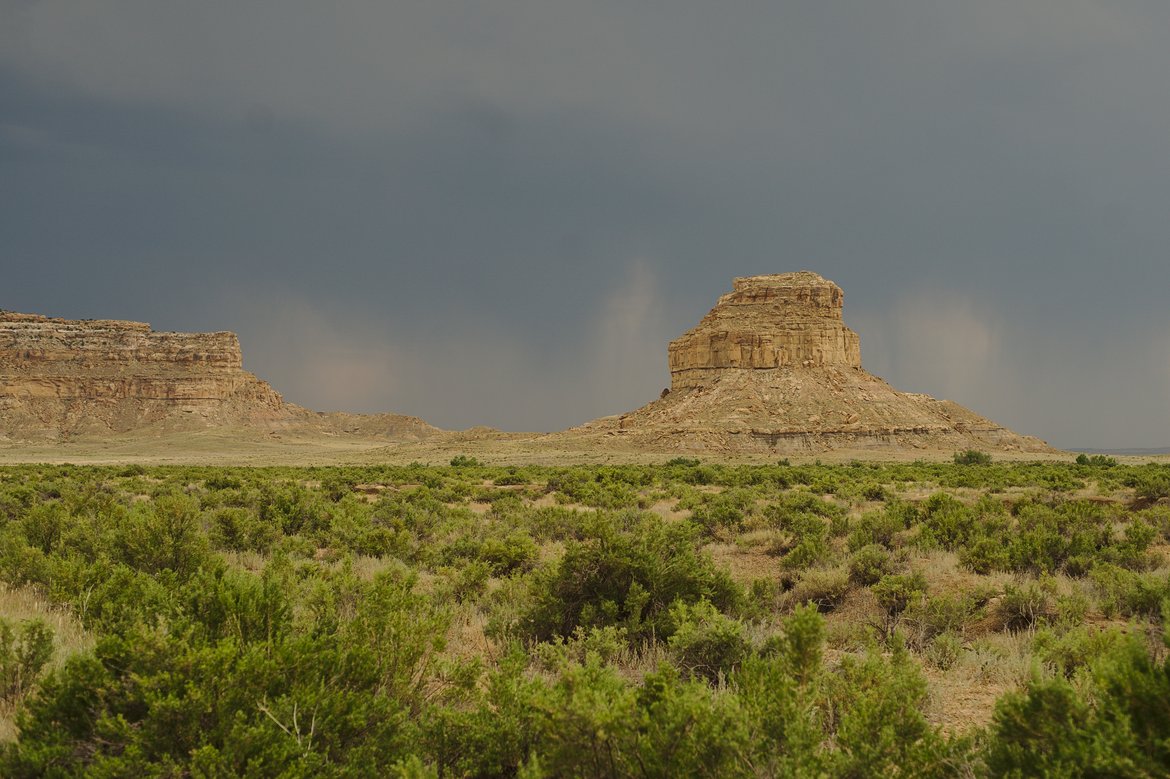
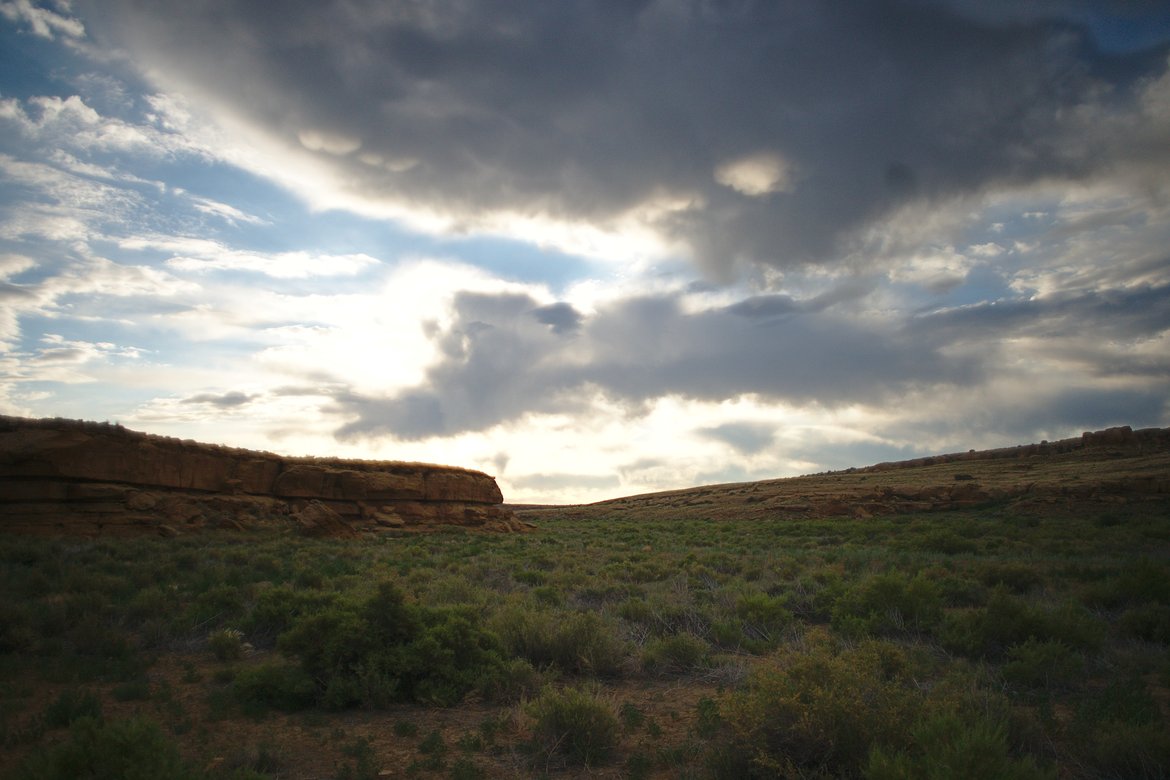
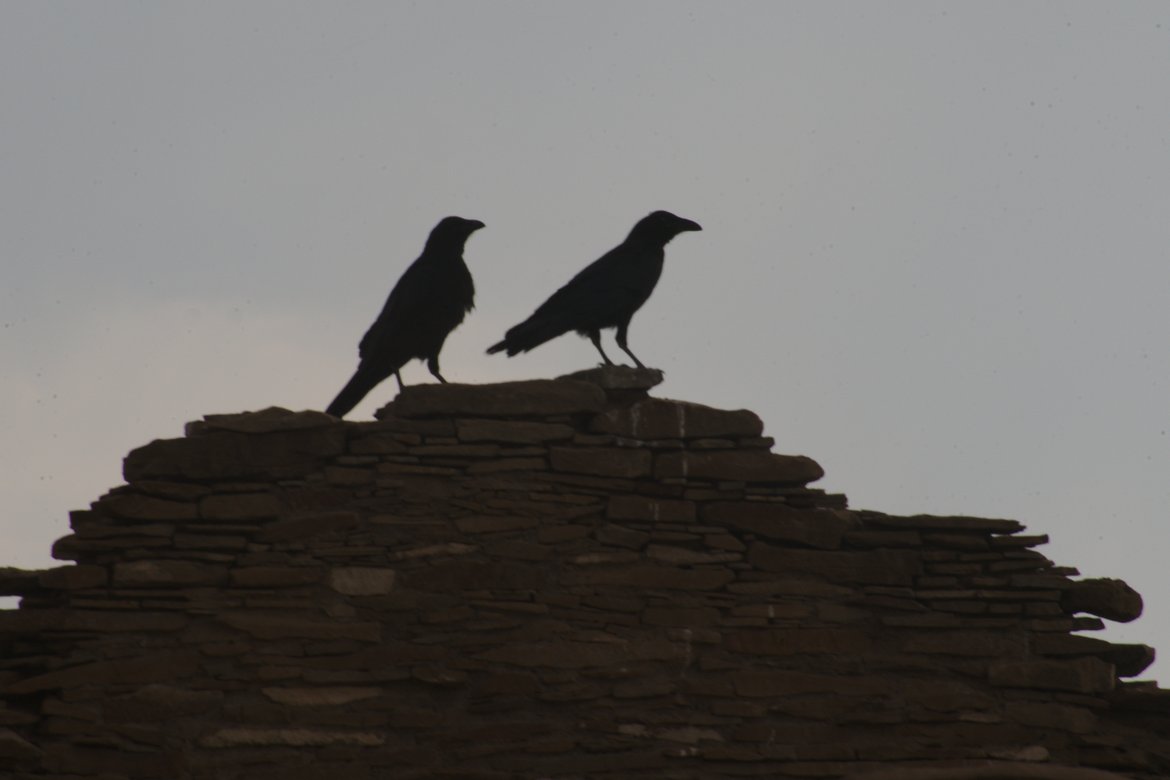
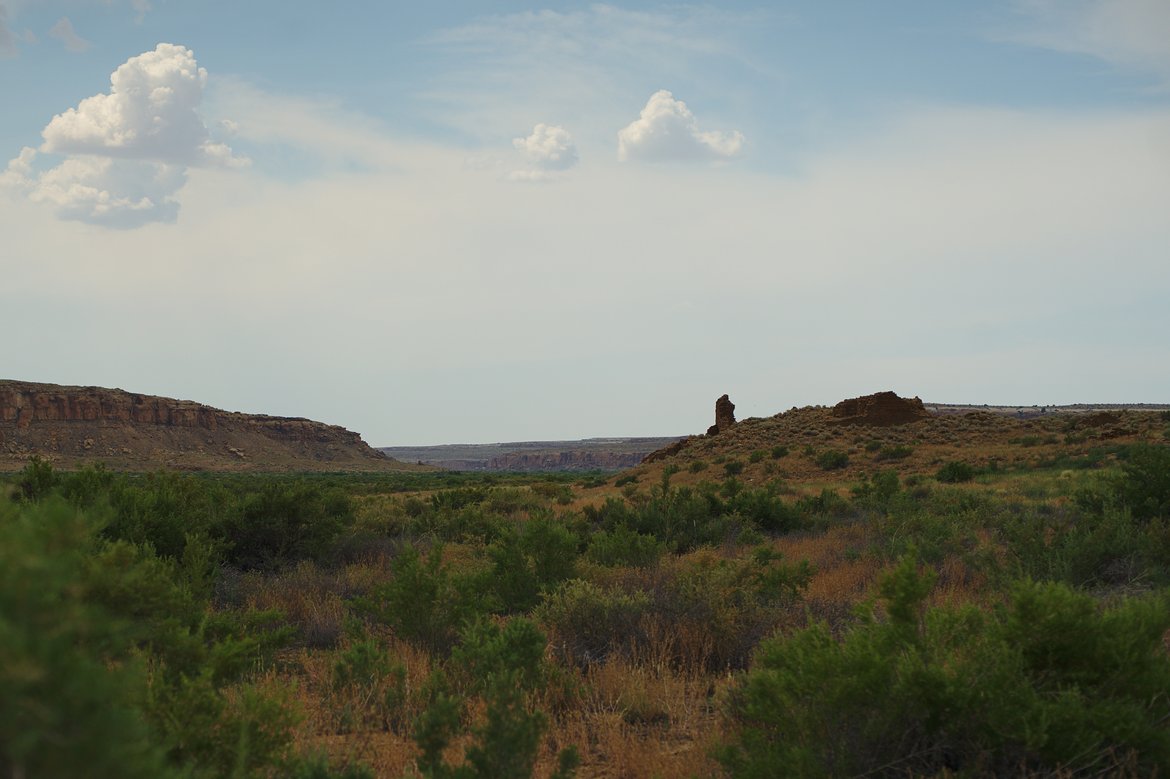
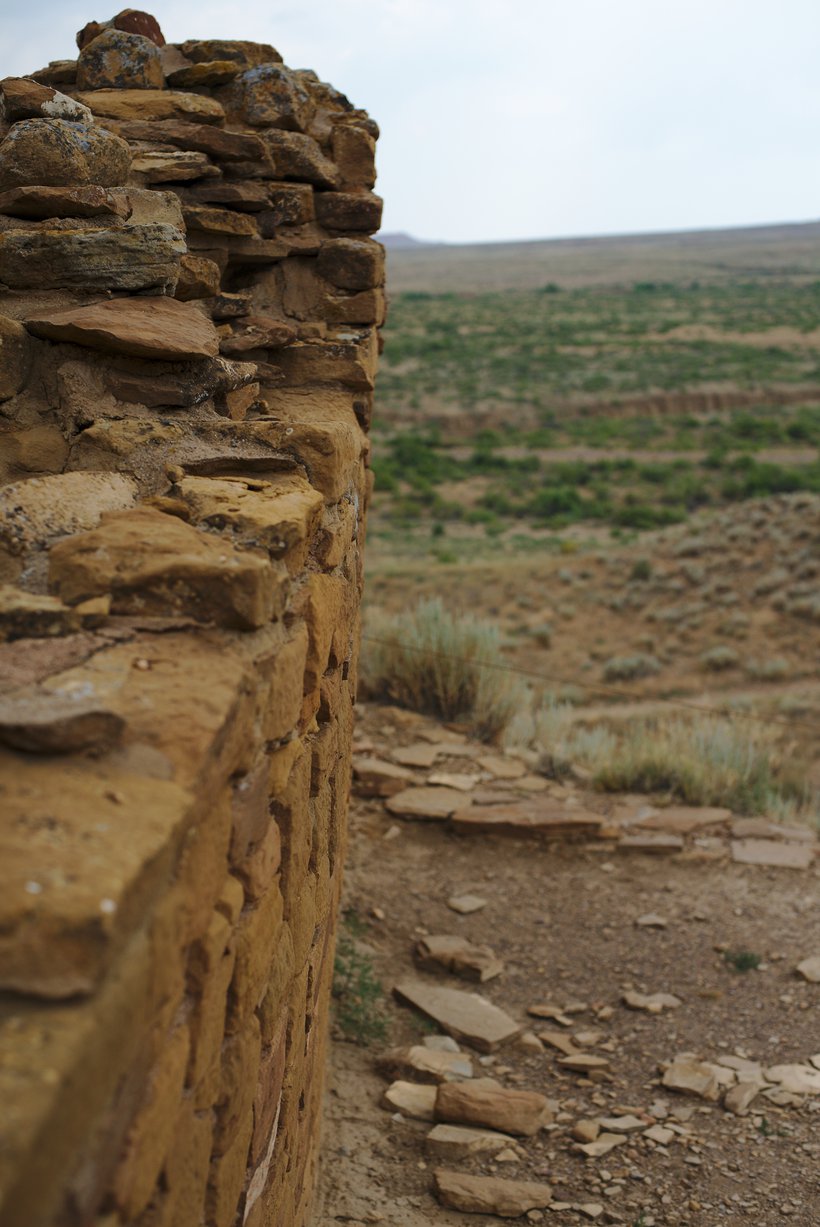
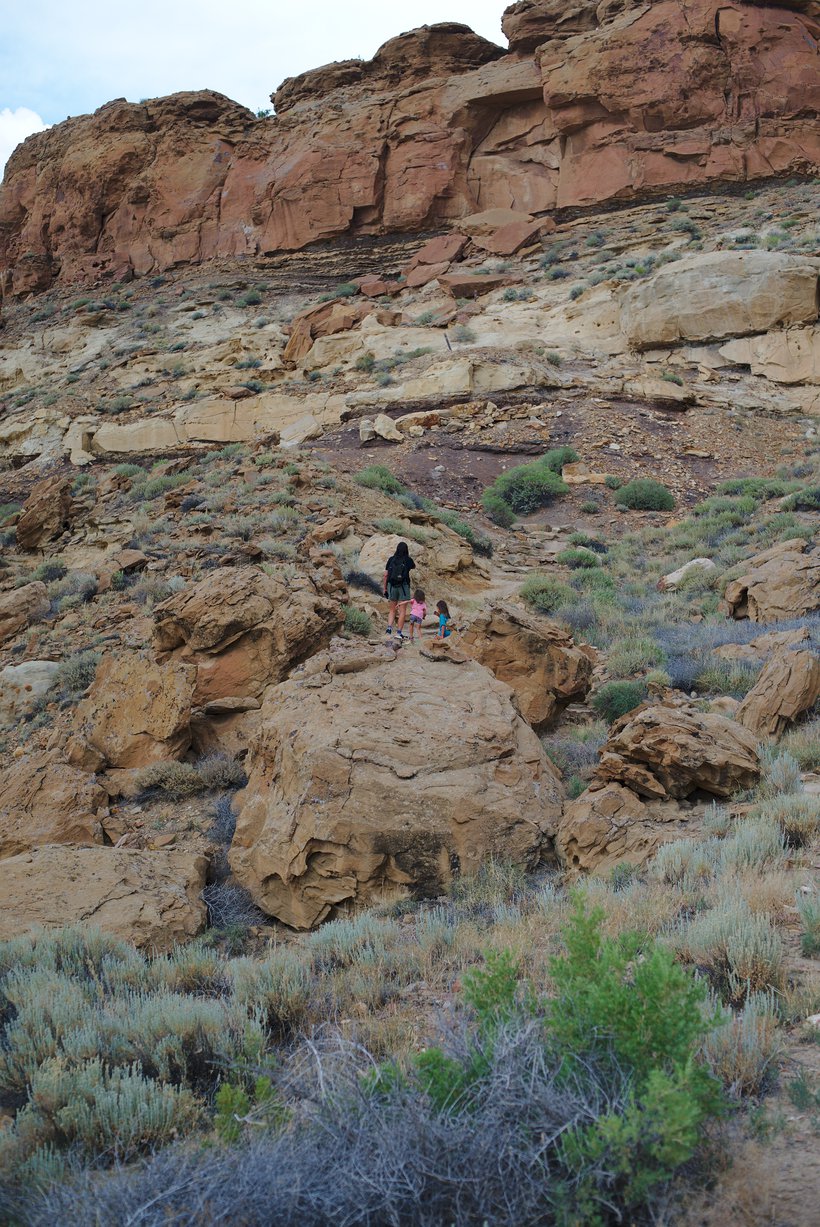

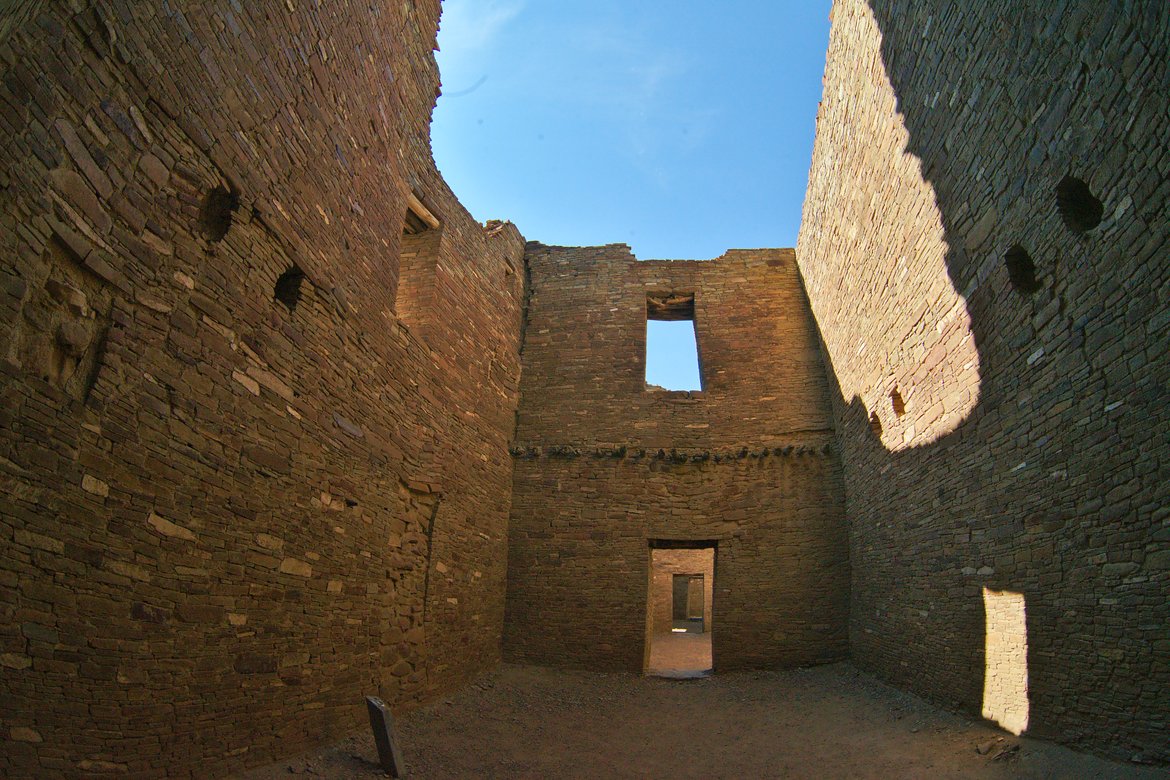
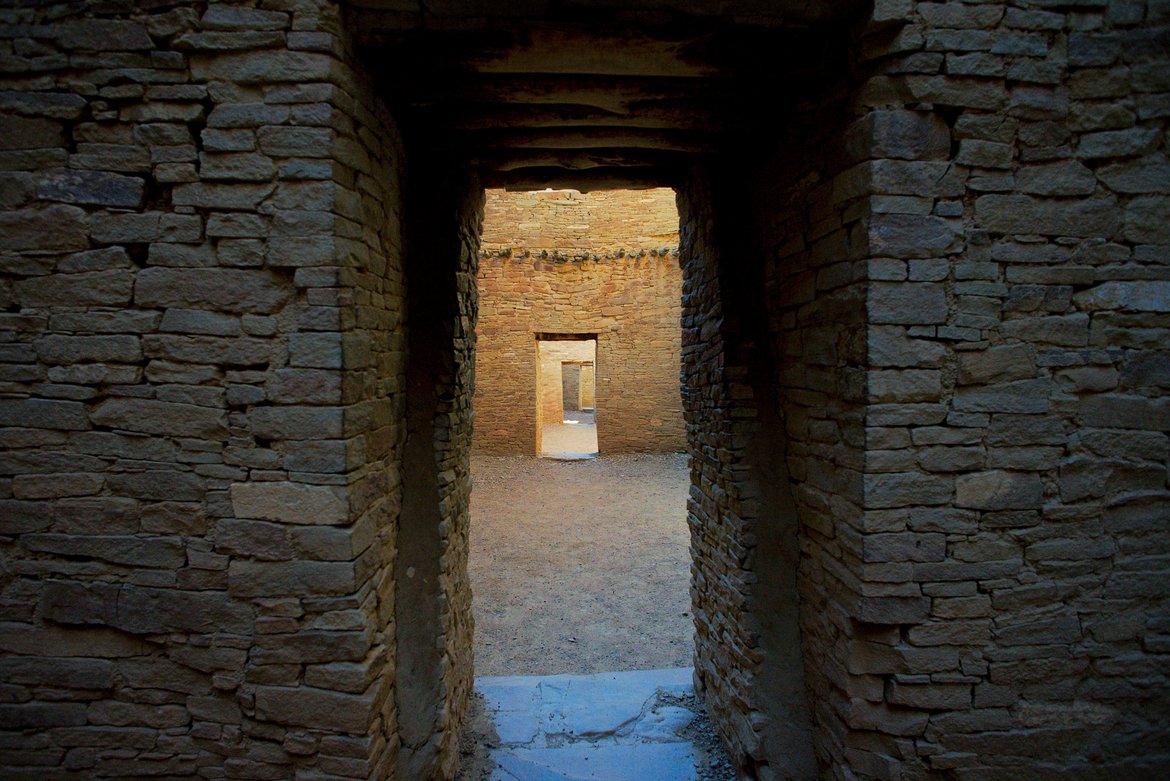
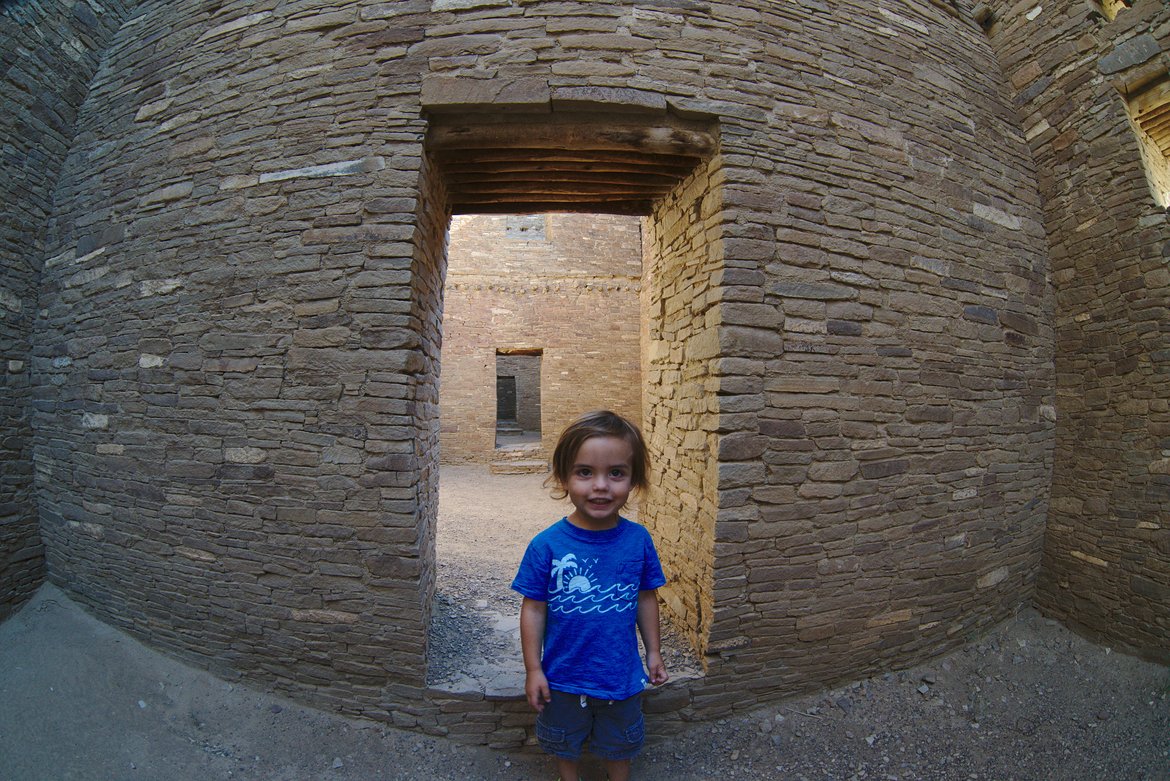
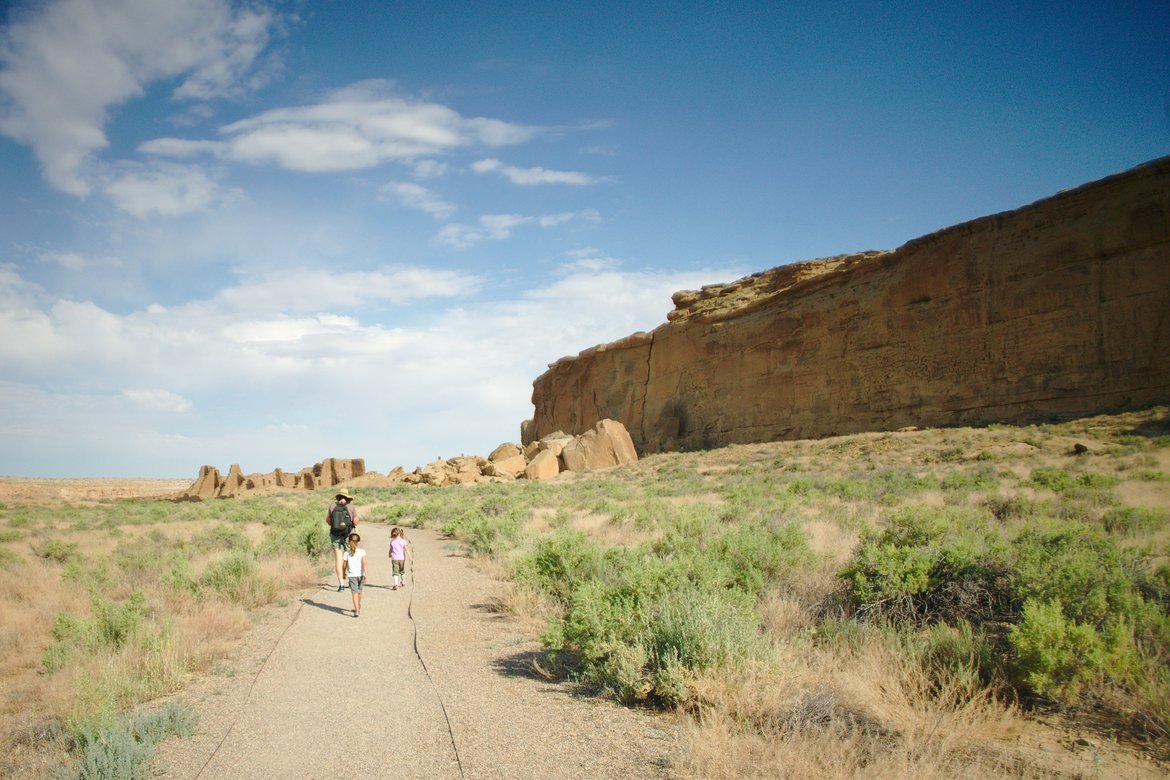
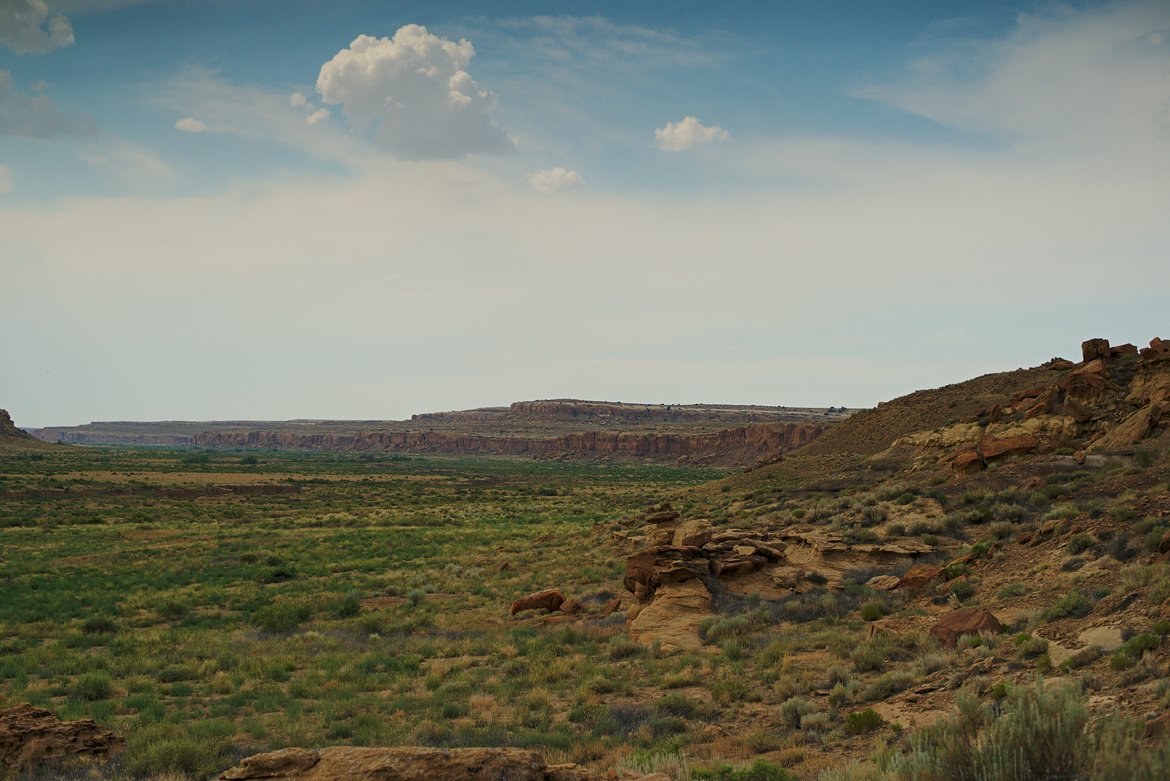
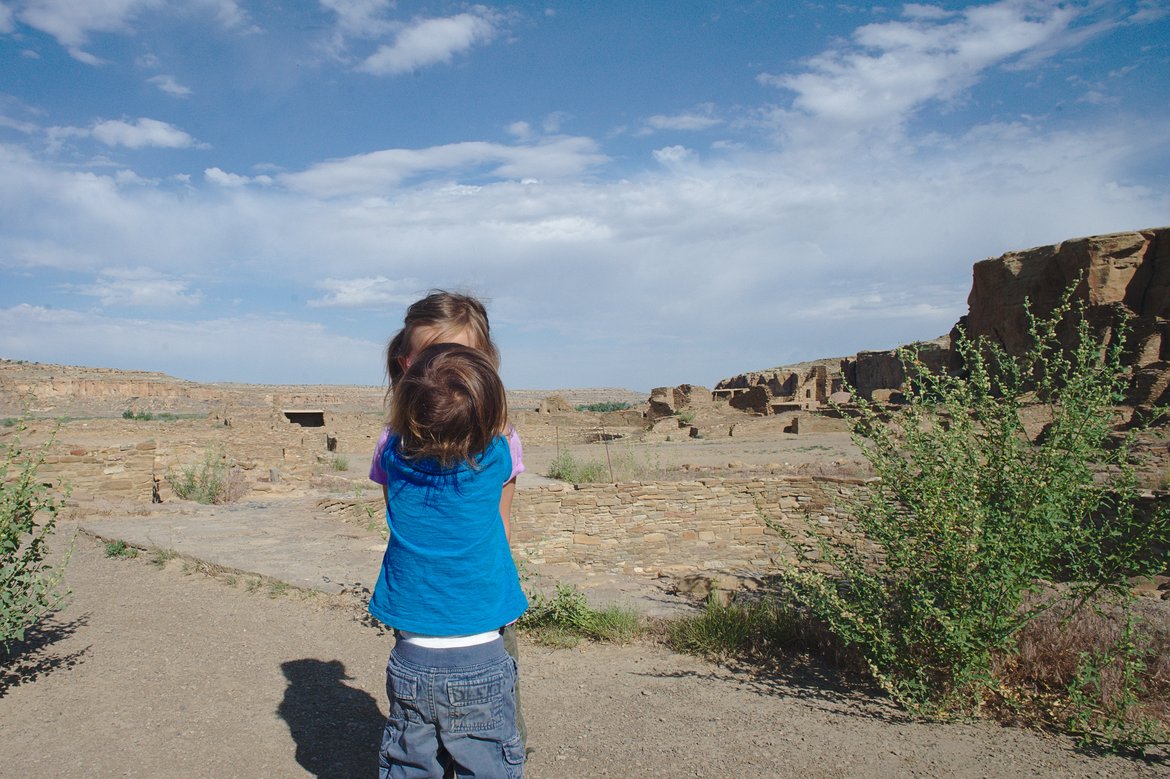
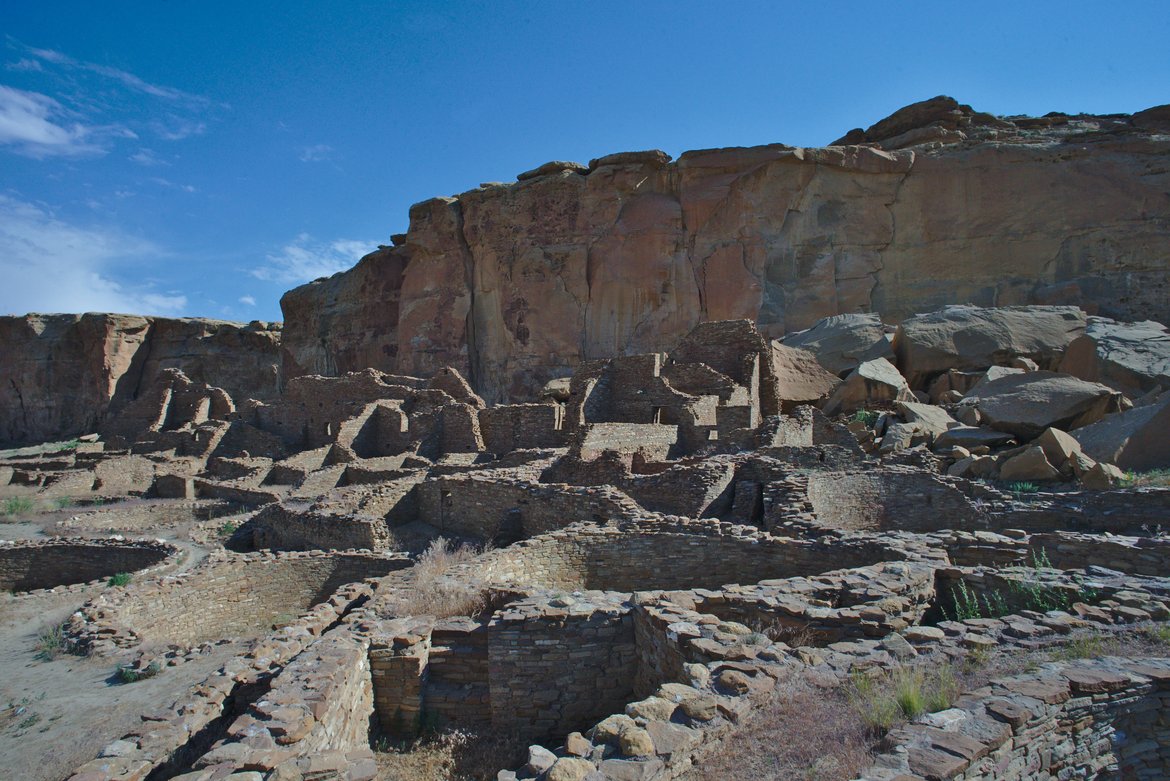

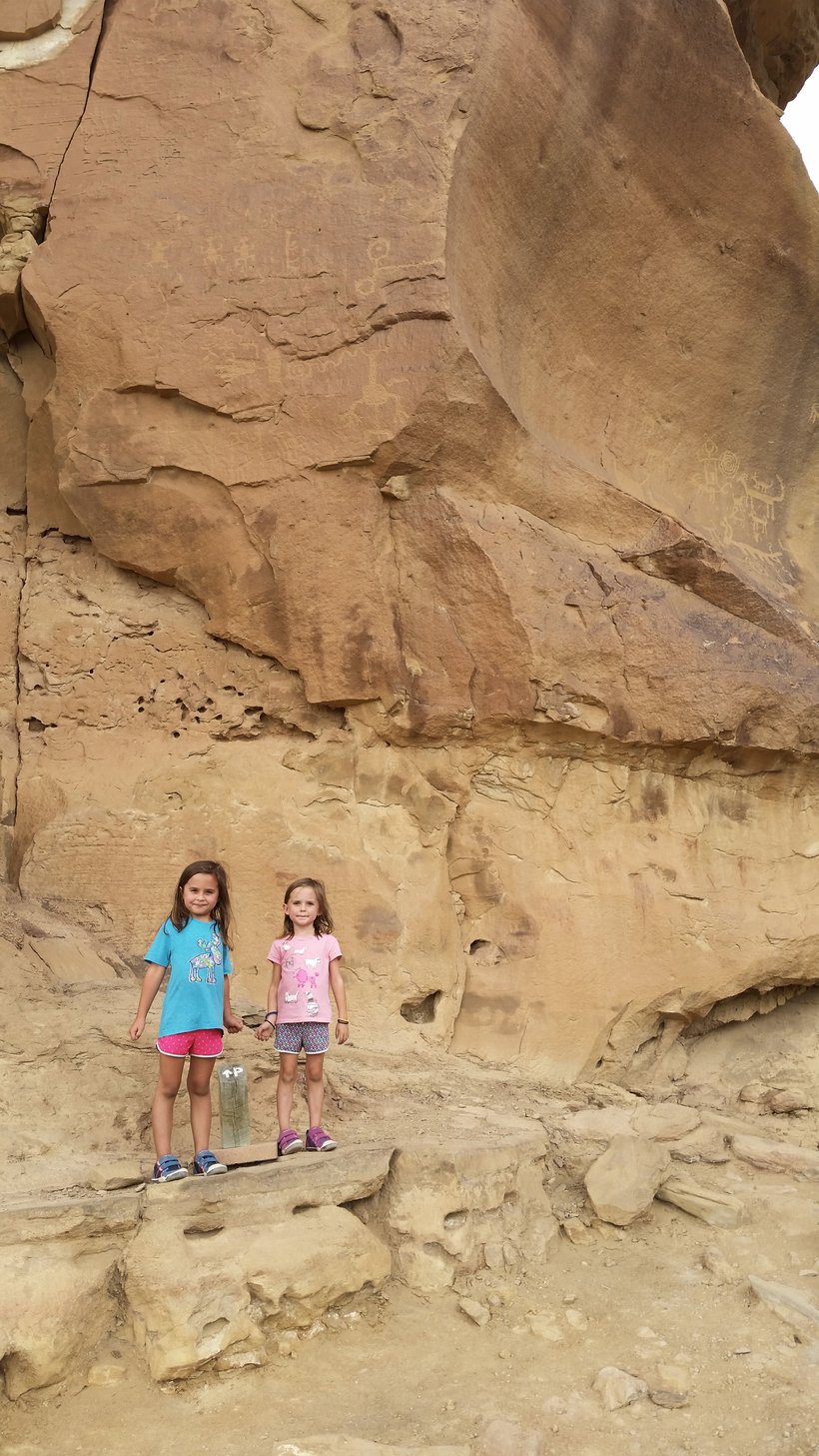
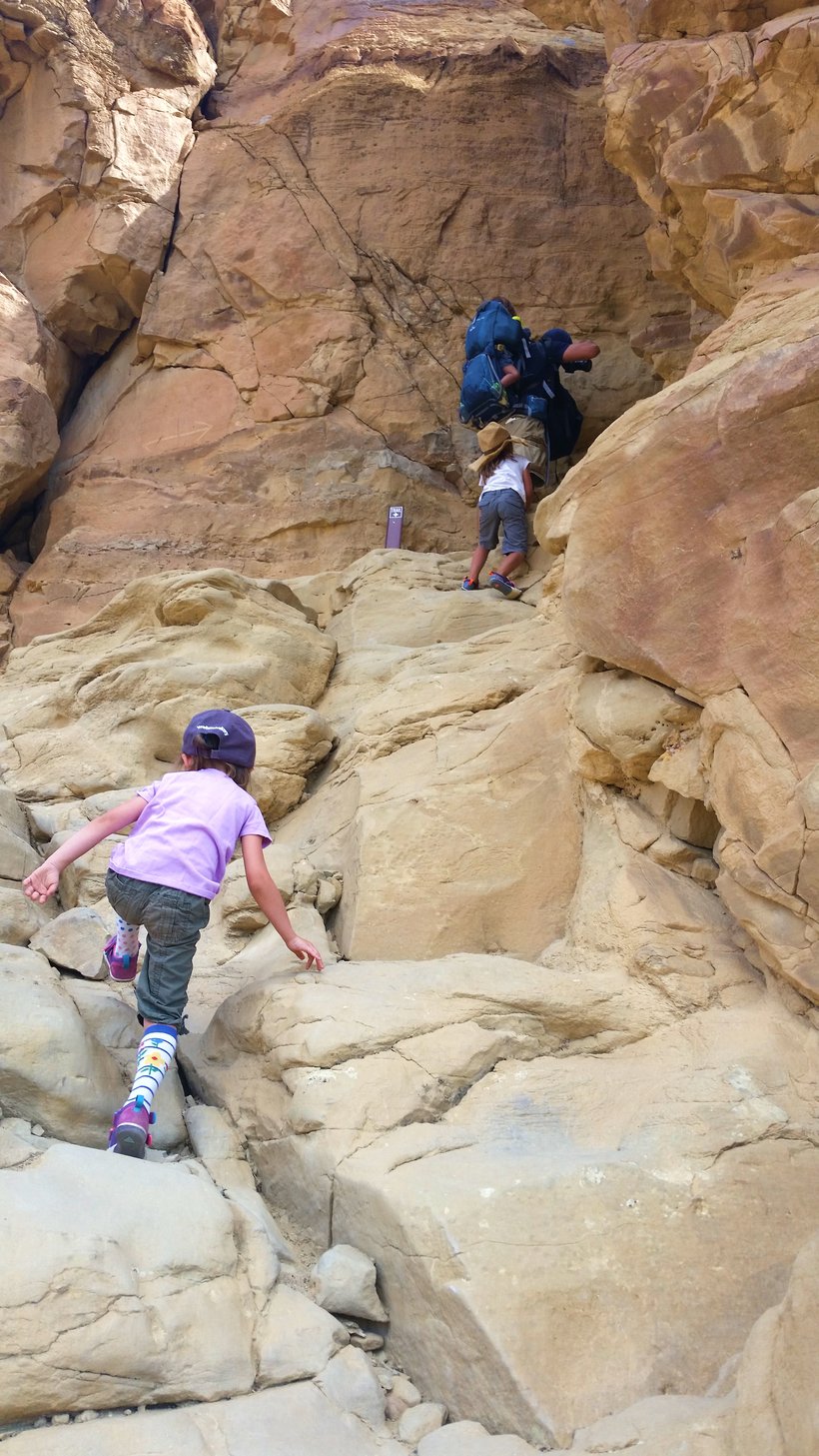
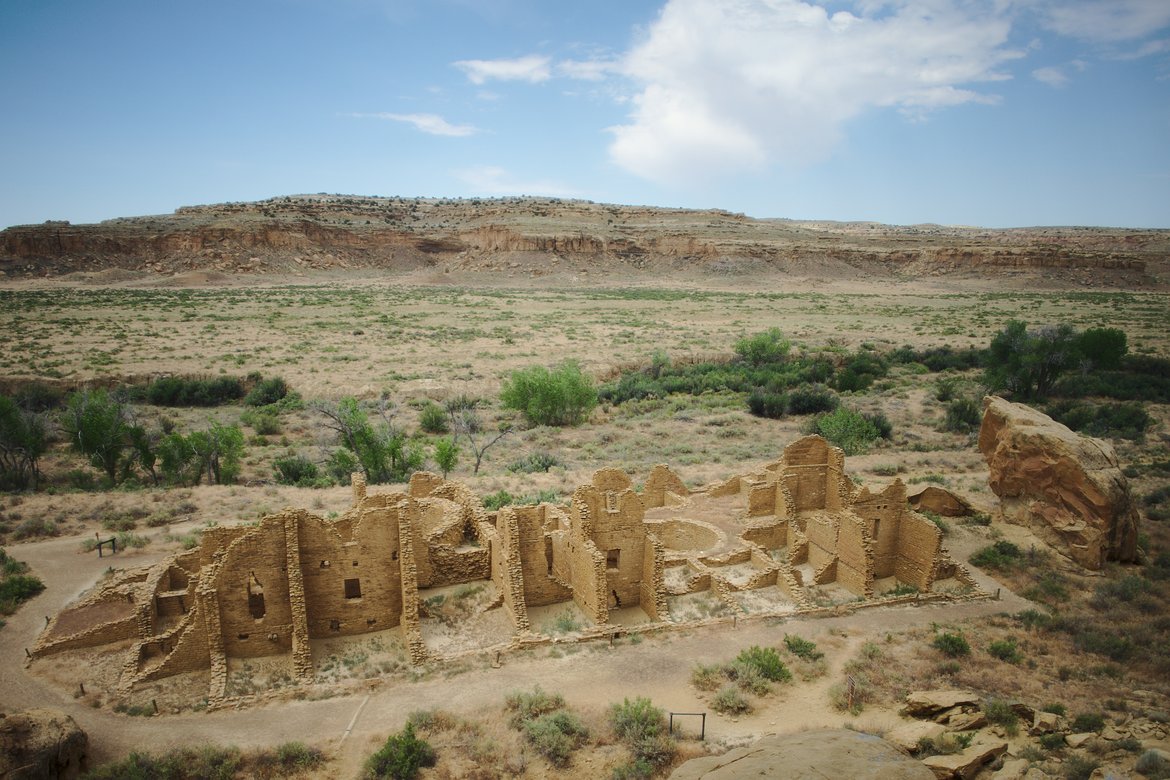


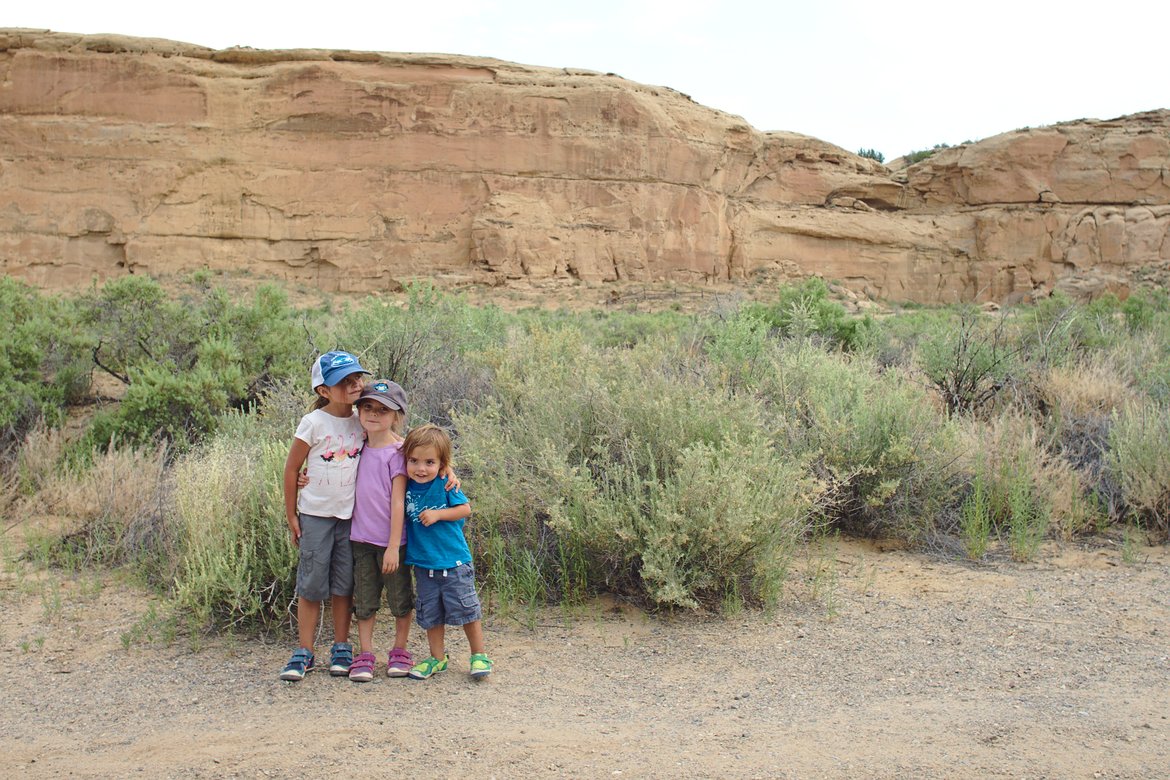
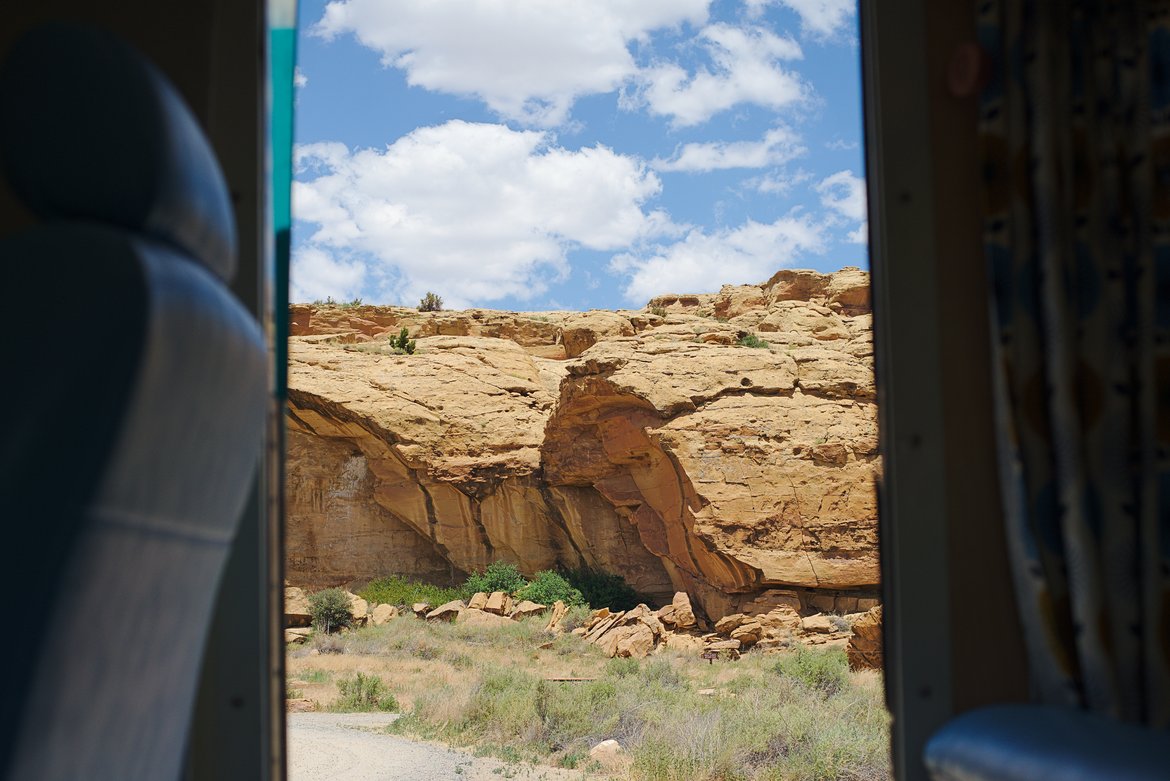
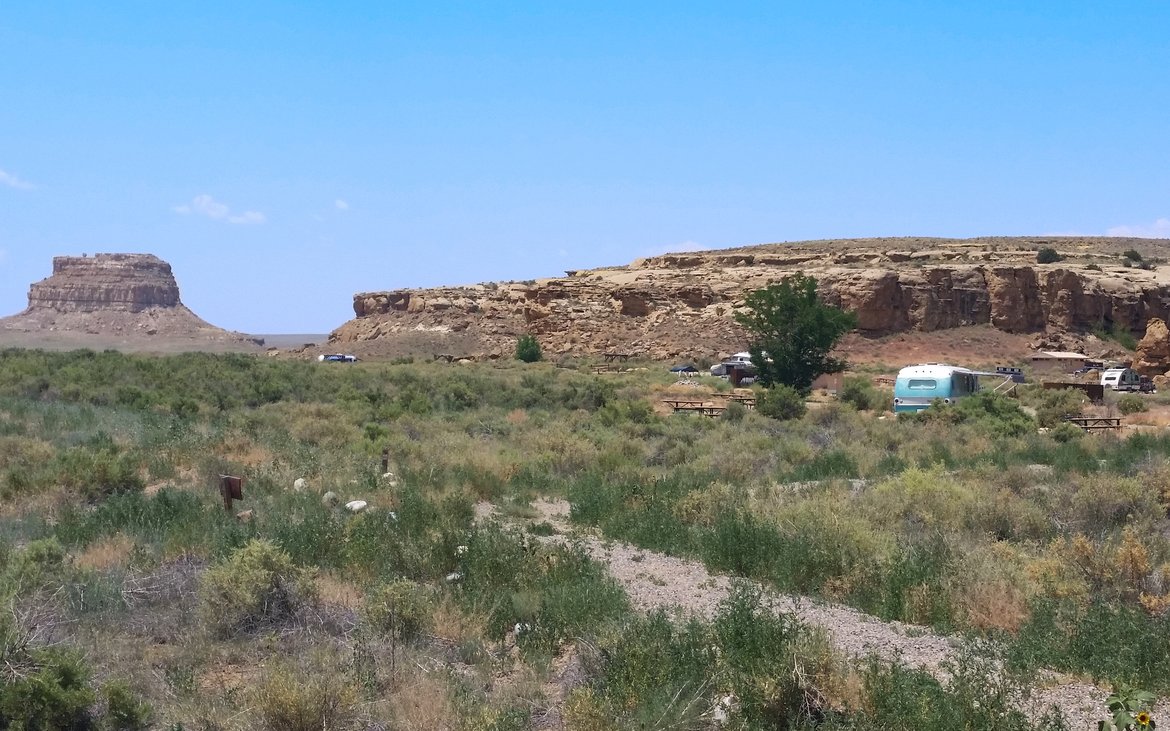
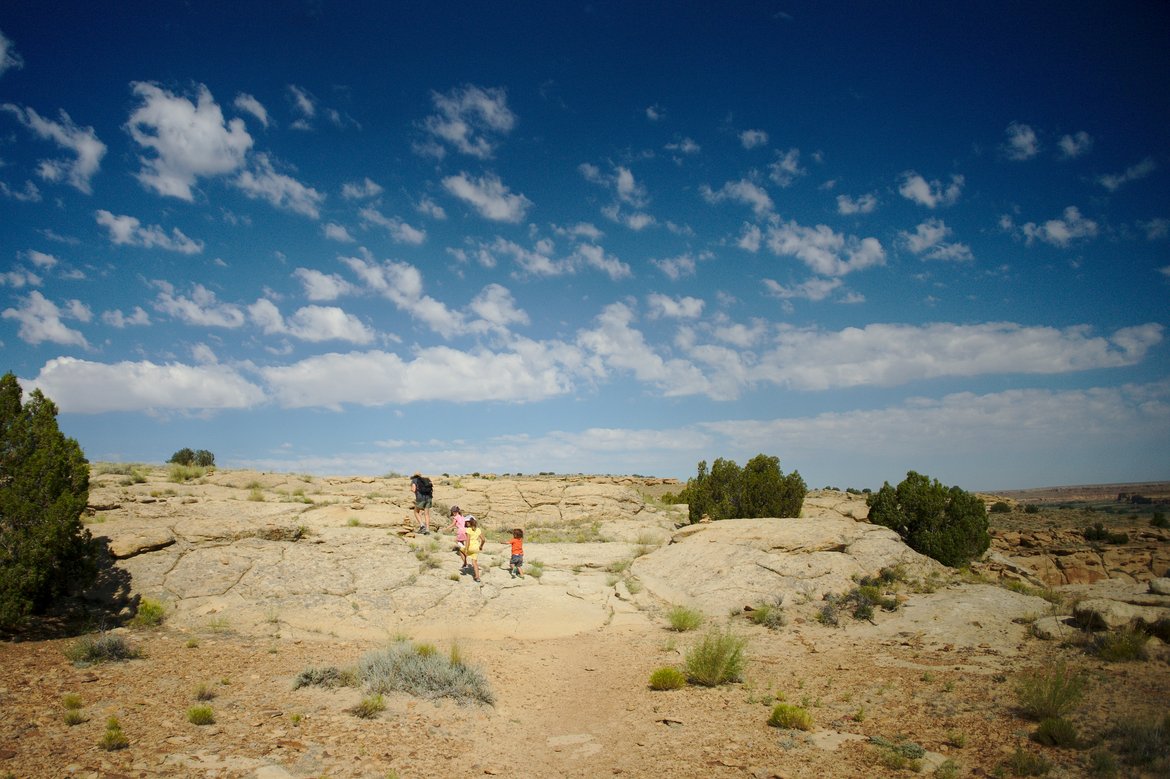
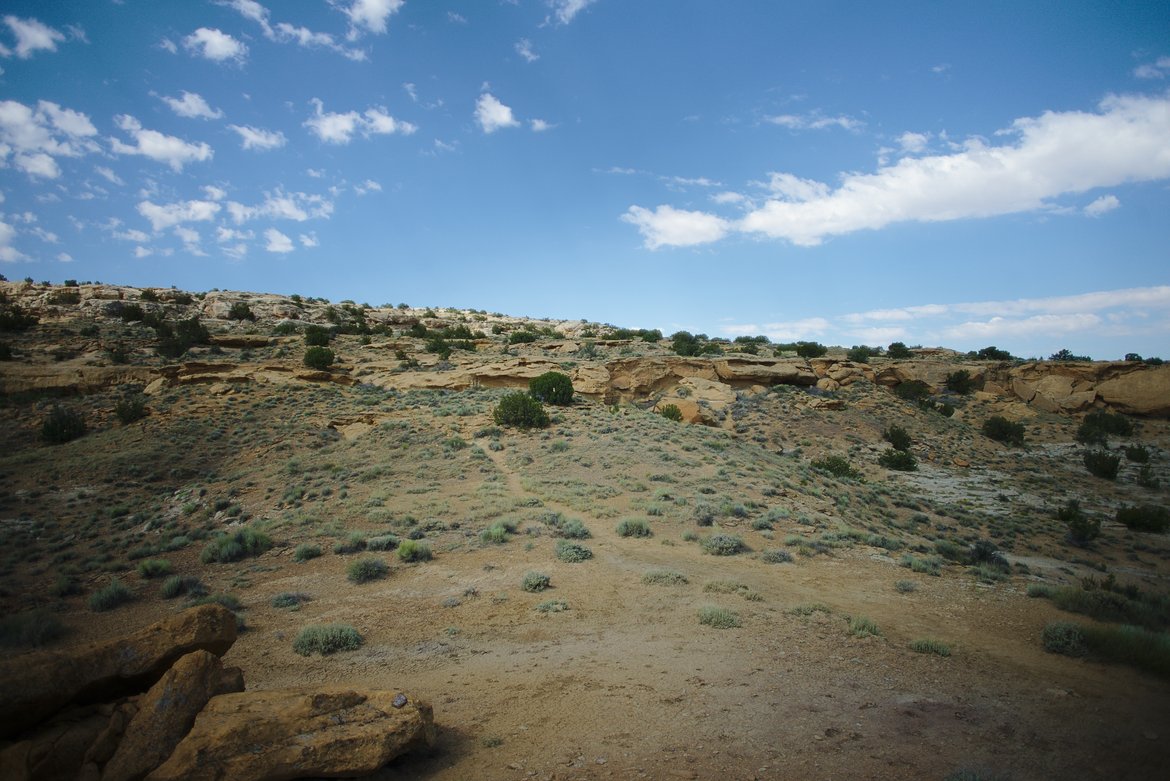
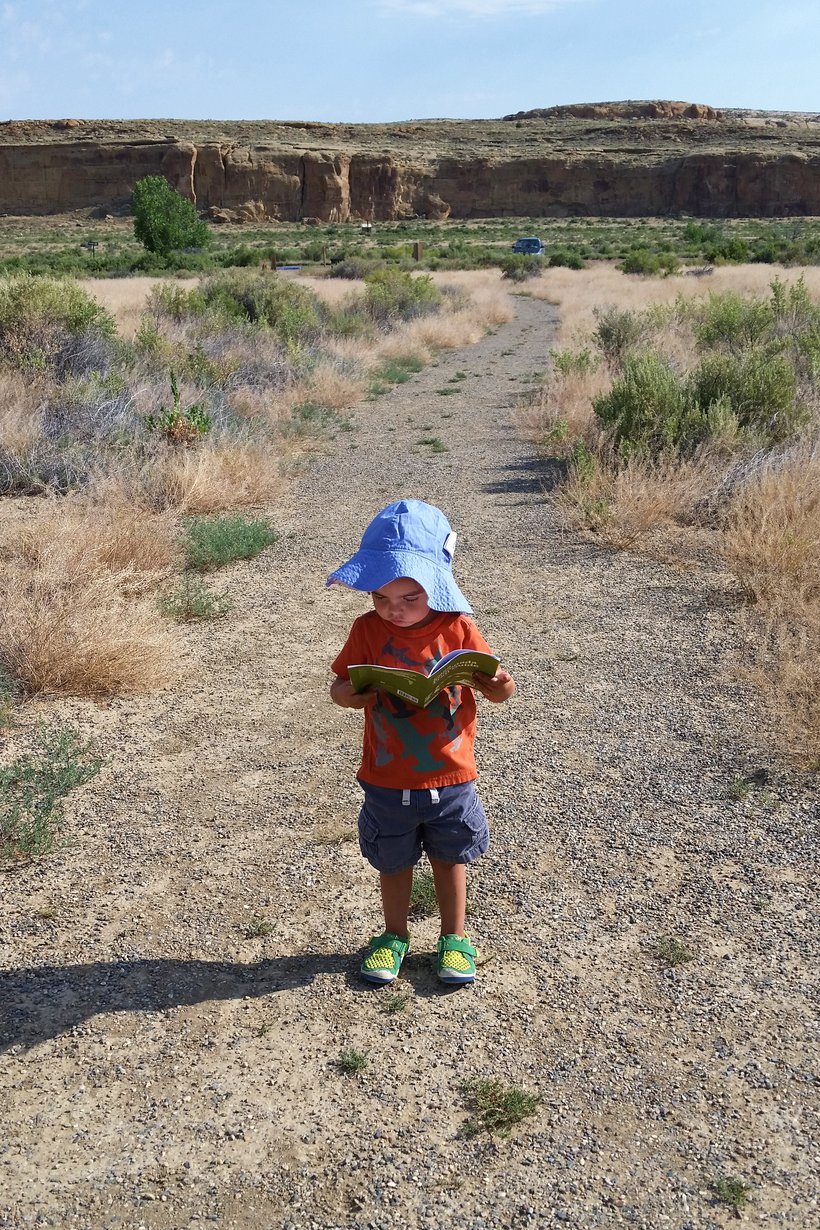
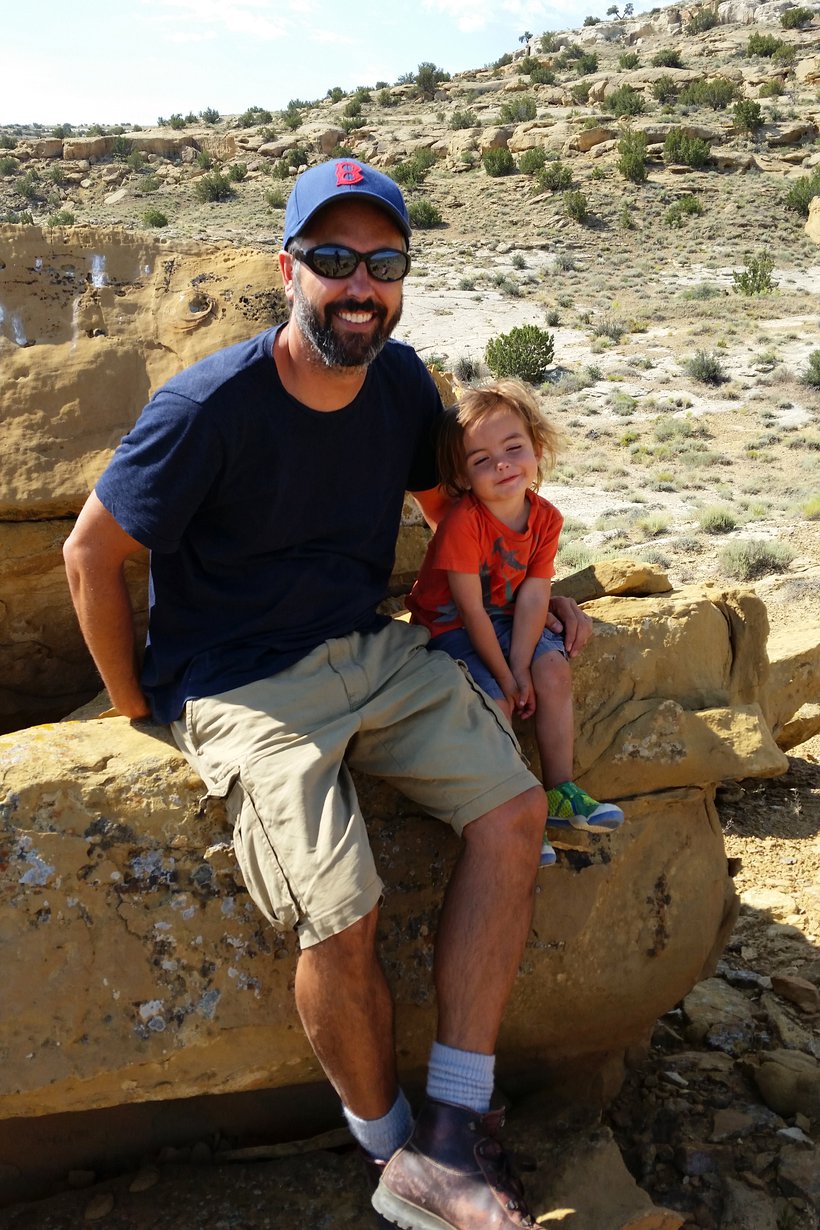

4 Comments
So glad you and your family are enjoying your adventure. Folks in Winder, Georgia are praying for your travels to be safe and worry free. Love reading your accounts of all that you are seeing and experiencing. Have fun and be safe!
Wow, what an adventure. I love your little tour guide though he’s looking a bit more like a kid than a baby these days. The photos are amazing, kinda reminds me of my trip to Egypt, being priviledged enough to walk thru the ruins, being a part of an ancient culture. What an experience for you all. Continue to enjoy and keep us posted!
@Arva-
He is looking more like a kid isn’t he. And Egypt is one place I’d love to go. We’ll just have to ship the bus over. :-)
I had to reread this; the first reading inspired a trip of my own last month. It was awe inspiring, Thanks.
A couple weeks before my trip the north road had washed out (I did not know this, should’ve called?… naw) and had a hard time getting in with my old Japanese s**tbox. I had to move some rocks into large ruts the size of my tires to get through. The few folks in the campground met me with enthusiasm since they were amazed I got in without a 4WD vehicle.
I should have planned for longer as I only spent two nights, but it’s a trip I will never forget.
Thoughts?
Please leave a reply:
All comments are moderated, so you won’t see it right away. And please remember Kurt Vonnegut's rule: “god damn it, you’ve got to be kind.” You can use Markdown or HTML to format your comments. The allowed tags are
<b>, <i>, <em>, <strong>, <a>. To create a new paragraph hit return twice.